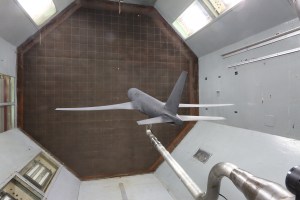NASA wants to increase innovation in the way airplanes fly and the aviation industry along with it. The Convergent Aeronautics Solutions project invests in seemingly improbable ideas that might lead to solutions to the problems that plague aviation and impact safety, environmental and community impact, and the global growth in air traffic.
The goal of CAS is to rapidly assess the feasibility of novel concepts to determine whether additional investment is warranted. Those that prove feasible are expected to transition into more focused technology development projects to mature and apply the enabling technologies.
CAS concepts must demonstrate five key attributes:
Convergent – exploit the benefits of combining multiple disciplines and multiple partners, both within and external to NASA.
Transformative – exhibit the potential for substantially greater impact than current approaches.
Targeted – address challenges and opportunities relevant to NASA’s strategic objectives and outcomes reflected in NASA Aeronautics Research Mission Directorate’s Strategic Implementation Plan.
Feasibility Focused – determine whether and the degree to which the concept is feasible with minimal further development of the technologies involved.
Rapidly Executed – complete feasibility assessments in less than 2.5 years.
Past CAS investments have been made using a venture capital-inspired approach including an annual “shark-tank” competition called CASTInG (CAS Teams Investment Gateway), which is used to select the next round of studies.
Currently the way CAS selects concepts for evaluation is under review and will be undergoing changes. The driver for change is two-fold. There is a desire to focus on key areas requiring innovation and increase the potential for transition of feasible ideas to industry and within NASA.
Concepts that are selected are given continued support under an agile “light management” approach that emphasizes outcomes over activity and reporting.
See real-life examples of potential CAS innovation by watching this informative 2-minute video.
Download a PDF for a CAS project overview




































